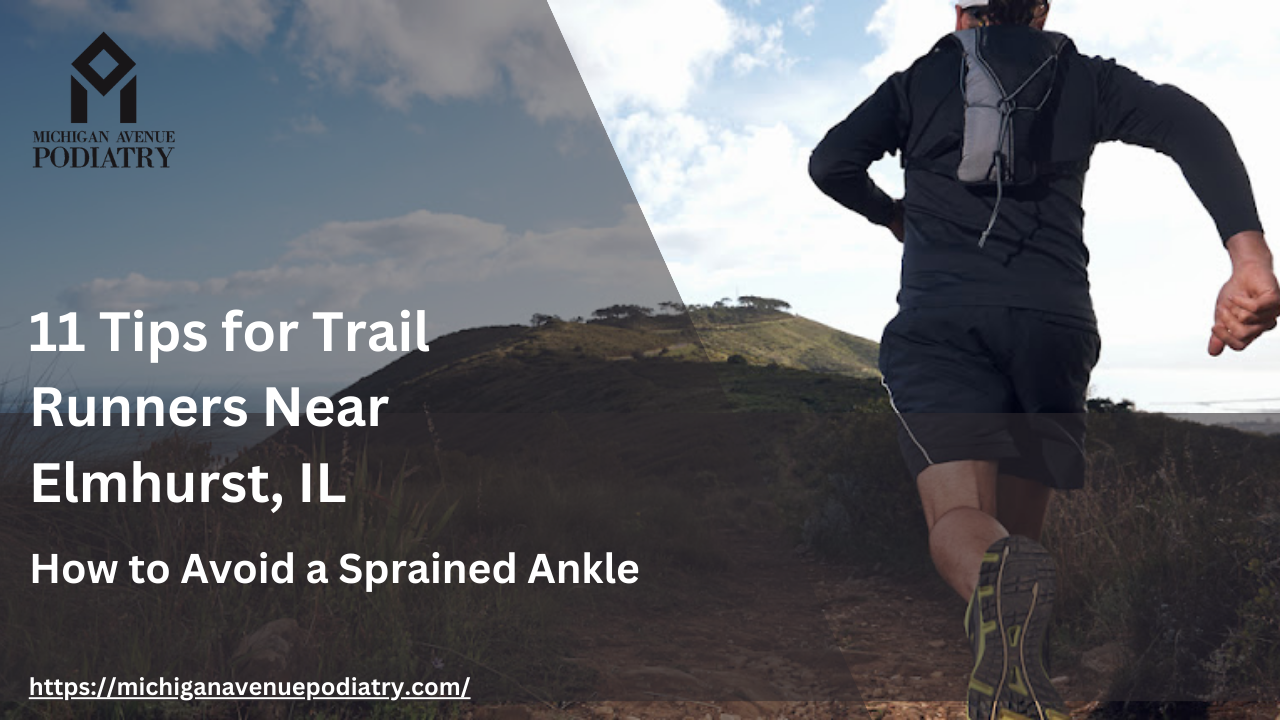Trail running near Elmhurst, IL can be a thrilling experience, offering beautiful scenery and a refreshing outdoor workout. However, navigating uneven terrain and unpredictable obstacles can put you at risk of a sprained ankle, a common injury among trail runners. To help you stay safe on the trails and enjoy your runs to the fullest, here are some simple yet effective tips to avoid a sprained ankle.
1: Choose the Right Shoes
Wearing proper footwear is essential for trail running safety. Look for trail running shoes with sturdy soles, good traction, and ankle support. These features help stabilize your feet and ankles on uneven surfaces, reducing the risk of twisting or rolling an ankle.
2: Warm Up Before Your Run
Before hitting the trails, take the time to warm up your muscles and joints with dynamic stretches and light exercises. This helps improve flexibility and range of motion, preparing your body for the demands of trail running and reducing the likelihood of injury.
3: Start Slow and Gradually Increase Intensity
If you’re new to trail running or exploring unfamiliar trails, start with shorter, less challenging routes, and gradually build up your distance and intensity over time. This allows your body to adapt to the demands of trail running and reduces the risk of overexertion and injury.
4: Watch Your Footing
Stay vigilant and pay attention to your footing while running on trails. Keep an eye out for rocks, roots, branches, and other obstacles that could trip you up or cause you to twist an ankle. Adjust your stride and pace as needed to navigate tricky terrain safely.
5: Stay Hydrated and Fueled
Proper hydration and nutrition are essential for maintaining energy levels and muscle function during trail runs. Drink water regularly to stay hydrated and replenish electrolytes as needed with sports drinks or electrolyte supplements. Fuel your body with nutritious snacks before and during longer runs to sustain energy levels and prevent fatigue.
6: Strengthen Your Ankles
Incorporate ankle-strengthening exercises into your regular fitness routine to improve stability and support around the ankle joint. Simple exercises like calf raises, ankle circles, and resistance band exercises can help strengthen the muscles and ligaments that support your ankles, reducing the risk of sprains.
7: Be Mindful of Trail Conditions
Be mindful of trail conditions and environmental factors that could affect your run. Wet or muddy trails, loose gravel, and slippery surfaces increase the risk of slips and falls, so exercise caution and adjust your pace accordingly. Consider wearing trail running shoes with waterproofing or extra grip for added traction in challenging conditions.
8: Listen to Your Body
Listen to your body and pay attention to any signs of discomfort or fatigue during your runs. If you experience pain or discomfort in your ankles or any other part of your body, take a break and rest before continuing. Pushing through pain increases the risk of injury and can lead to more serious issues down the line.
9: Use Trekking Poles for Stability
Trekking poles can provide added stability and support while navigating steep or uneven terrain. Using trekking poles helps distribute weight more evenly, reduces strain on your ankles and knees, and improves balance on challenging trails.
10: Practice Proper Trail Etiquette
Respect other trail users and practice proper trail etiquette to minimize the risk of collisions and accidents. Yield to hikers and slower runners, announce your presence when passing, and stay alert to your surroundings to avoid unexpected obstacles or hazards.field.
11: Cool Down and Stretch After Your Run
After completing your trail run, take the time to cool down with a brisk walk and perform static stretches to help release tension and promote muscle recovery. Pay special attention to stretching your calves, hamstrings, and ankles to maintain flexibility and prevent stiffness.
By following these tips and staying mindful of your surroundings, you can reduce the risk of spraining your ankle while trail running. Remember to prioritize safety, listen to your body, and enjoy the beauty of nature as you explore the trails in Elmhurst, IL.
At Michigan Avenue Podiatry Elmhurst, IL, you’ll receive care from some of the best podiatrists and doctors in the field. Learn more about ankle injuries or call our office for a consultation at 312-701-0770.
To schedule an appointment with our board-certified foot and ankle specialists, Book Your Appointment Now




